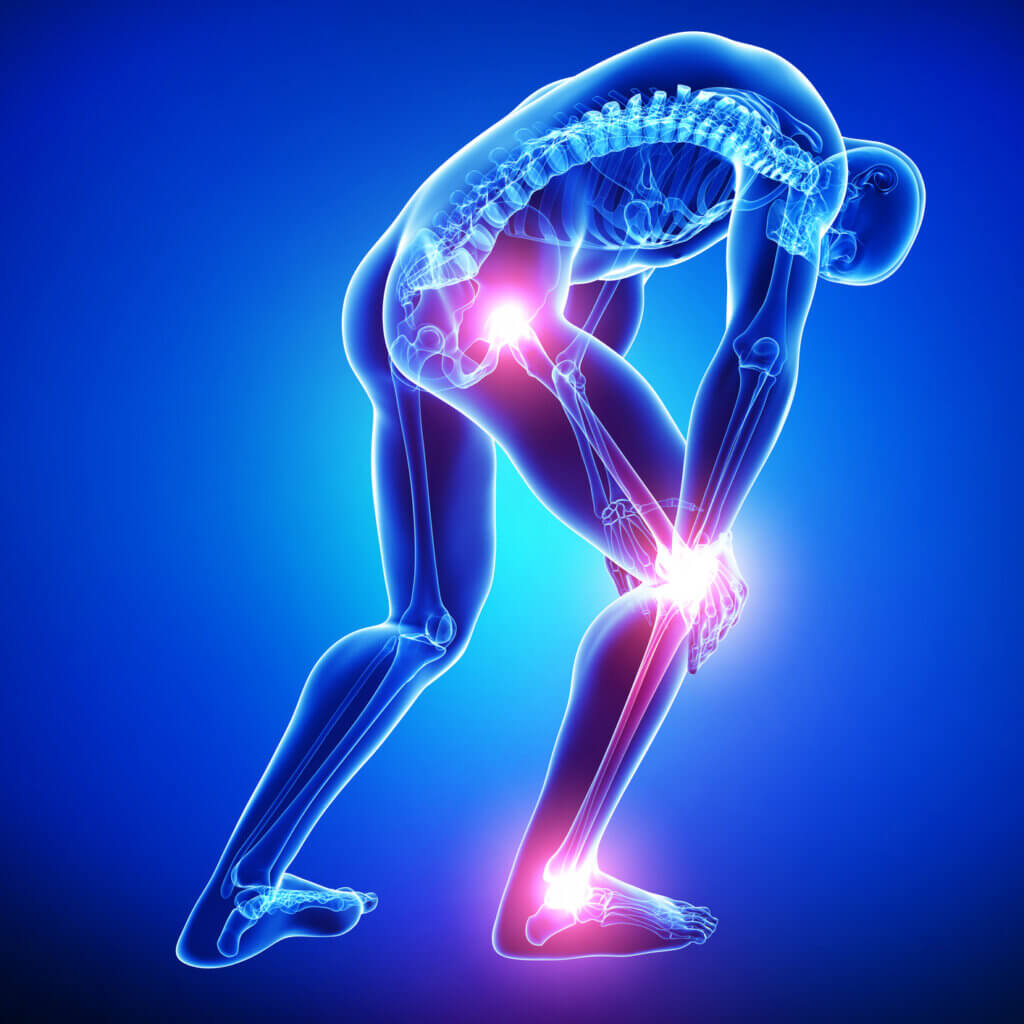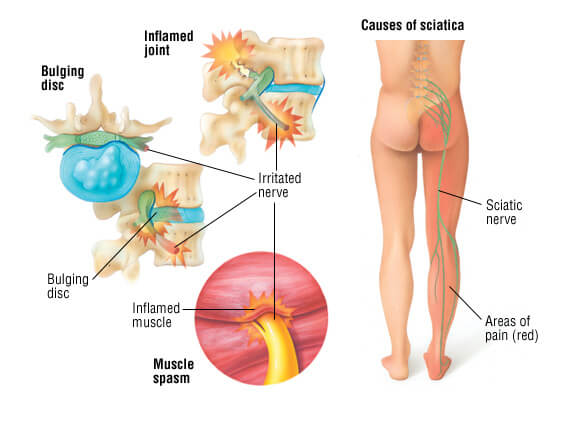
Sciatica has to be one of the most common problems people come to see us about and has been known to affect as much as 40% of the population at stage. When I ask them to show me where they get the pain some point to front of their leg, some to the back of their leg, some to their lower back and others to their shoulder. It would appear that not everyone is clear about what sciatica actually is, so we thought we help you understand it a bit better. Technically sciatica isn’t a true medical diagnosis, but is instead just a symptom of another underlying problem. As you’ll soon see sciatica is an irritation to the sciatic nerve, but these days, sciatica is commonly used as a lay term for pain that runs down the leg.
What actually is sciatica then?
Sciatica is an irritation to the sciatic nerve. The sciatic nerve runs from your low back down each of your legs to your toes. It is formed by the nerve roots (nerves that come out of the spine) L4-S3 at the bottom of the lower back. After they leave the spine, the nerve roots join together to form the largest nerve in the human body. The sciatic nerve transmits information from your brain to your legs, feet and toes and back up again. This not only allows you to walk and move your legs but also to feel sensation when something touches your leg or quickly move your leg away when you stand on that rogue block of Lego that you couldn’t find earlier! So essentially – it’s kind of a big deal.
What are the symptoms of sciatica?
- Typically sciatica is pain running down the back of the thigh, although it can extend as far down as the feet or even the toes.
- It is also commonly felt as pain into the lower back.
- It may even feel like a burning or tingling sensation.
- Occasionally there may be some sensation of numbness or leg muscle weakness in more advanced cases.
- Generally speaking it tends to affect one leg (and only very rarely will it affect both).
The most common causes of sciatica:
- Nerve root irritations – This is when inflammation in/or around the spine causes irritation to one of the lumbar nerve roots (exiting the spine) that affects the sciatic nerve. It is normally caused by spinal joint restrictions or poor spinal mobility.
- A disc bulge (‘slipped disc’) – This is when one of the discs in the spine bulges out to the back or side and directly presses on the lower nerve roots.
- Piriformis syndrome – The piriformis is an important muscle in the buttock that the sciatic nerve passes under or sometimes through, and if it gets too tight it can irritate the sciatic nerve.
- Spinal arthritis – If the spine has arthritic or degenerative changes in it, sometimes bony changes (or spurs) can cause a direct pinching on the nerve roots and therefore cause the sciatic pain.
- Referred pain – Sometimes “knots” in the muscles of the buttocks or low back, or even spinal and pelvic joint restrictions can cause the sensation of pain down the leg (referred pain from another source) that can mimic the feeling of sciatica.

How do you treat sciatica?
With the causes listed above, in my humble opinion, a combination of Chiropractic adjustments, massage, rehab (including stretching) and ice give the best possible outcome and relief. This approach means that you are addressing any restrictions and misalignments of the spine and pelvis through the Chiropractic adjustments, relieving pressure on the nerves and aiding recovery. Massage will help to relax the tight/spasming muscles around the spine and in the buttocks, helping to offload the spine and also decrease any direct pressure on the nerve (as in piriformis syndrome). The stretching helps you in between seeing your Chiropractor and Sports therapist, and the ice pack reduces the inflammation around the nerve, again aiding a speedier recovery.
Importantly though, sciatica can be also caused by some other, yet very rare serious underlying complaints and so should always be checked thoroughly by a trained physician with a complete physical examination. If you have any change in your bowel or bladder habits (unusually a loss of control or inability to “go”) or numbness into both groins or the pubic area, coupled with severe back or leg pain, then you should contact the emergency services straight away as this may be a medical emergency.
Dr Mark Fairclough

